|
Columbia-Walla Walla Railway Palouse River & Coulee City Railroad Blue Mountain Railroad |
|||||||||||||||||||||||||||||||||
|
|
|||||||||||||||||||||||||||||||||
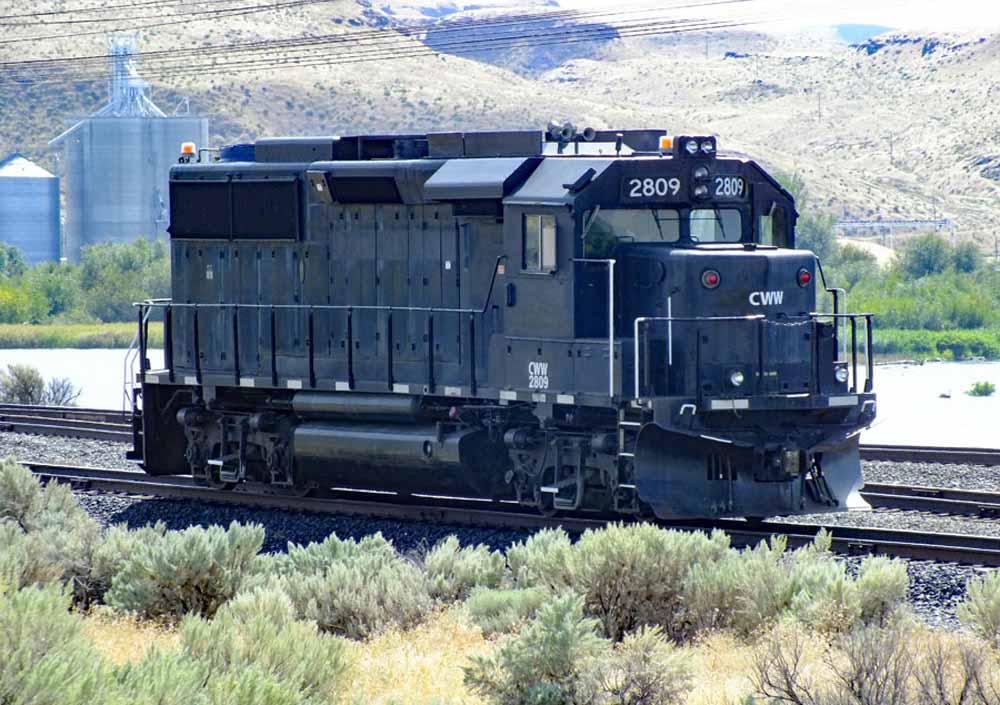
Columbia-Walla Walla Railway GP49 #2809 sitting at Wallula, Washington, in August 2019. |
|||||||||||||||||||||||||||||||||
|
|
|||||||||||||||||||||||||||||||||
|
History As noted on the Union Pacific and BNSF pages of this website, those two roads and/or their predecessors built a dense network of mostly duplicate branchlines in northeastern Oregon and southeastern Washington. Barge and truck competition, rate adjustments, and other economic factors prompted the carriers to abandon most of these lines in the early 1980s. There were however a few lines that generated enough traffic to sustain viable operations. The only one of these in Oregon stretched 28 miles from Walla Walla, Washington, south through Milton-Freewater, Oregon, to reach a large Smith Frozen Foods plant in Weston, Oregon. |
|||||||||||||||||||||||||||||||||
|
|
|||||||||||||||||||||||||||||||||
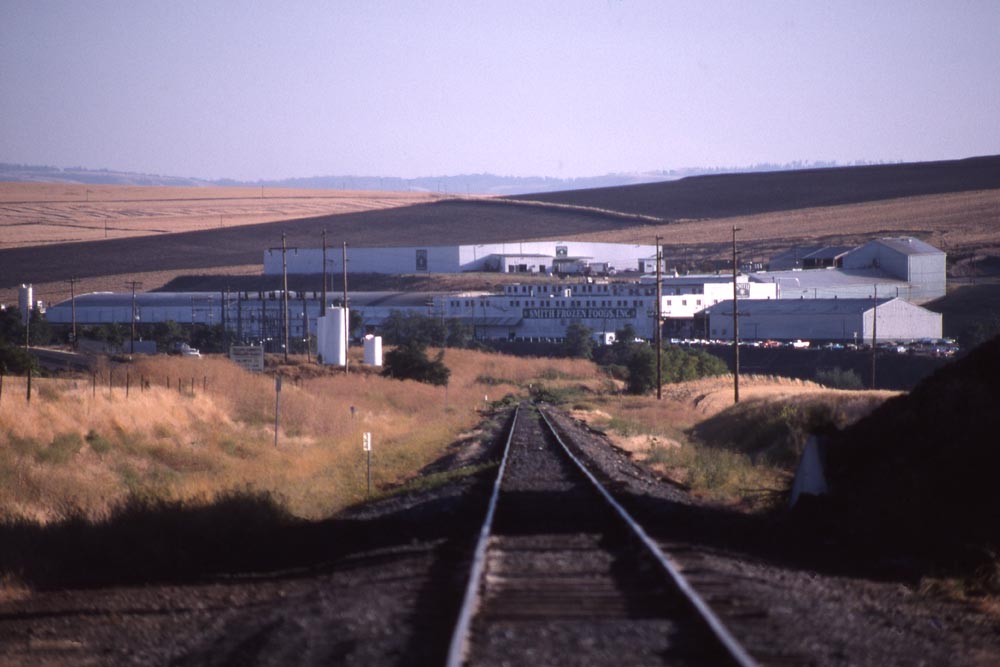
A view of the Smith Frozen Foods plant in Weston around the early to middle 1990s. John Henderson photo, Jeff Moore collection. |
|||||||||||||||||||||||||||||||||
|
|
|||||||||||||||||||||||||||||||||
|
One of the provisions of the Staggers Act of 1980 made it easier for mainline railroads to convey marginal
branchlines to new shortline railroad operators. Investors established several shortline holding companies
to assume these branchlines and run them as independent railroads, often with much lower cost structures
than the mainline railroads. Watco was one of the principle companies so established. In the early 1990s, Union Pacific determined to quit the last of its once extensive branchline network in northeastern Oregon and southeastern Washington. In late 1991/early 1992 UP included the Walla Walla to Weston branch as part of a package of approximately 100 miles of southeastern Washington branchlines offered for lease. Watco submitted the winning bid, and their new Blue Mountain Railroad commenced operations on 20 November 1992. Blue Mountain's Walla Walla operations interchanged traffic with the outside world at Wallula, Washington. Due to various historic arrangements Burlington Northern actually owned the first 3.7 miles of the line east from Wallula, over which UP and then Blue Mountain had trackage rights. BN once had its own branchline into Walla Walla but had long since abandoned it, leaving six miles of track serving several customers in Walla Walla isolated from the rest of its system. On 25 October 1993 BN leased both of these lines to Blue Mountain Railroad as well. |
|||||||||||||||||||||||||||||||||
|
|
|||||||||||||||||||||||||||||||||
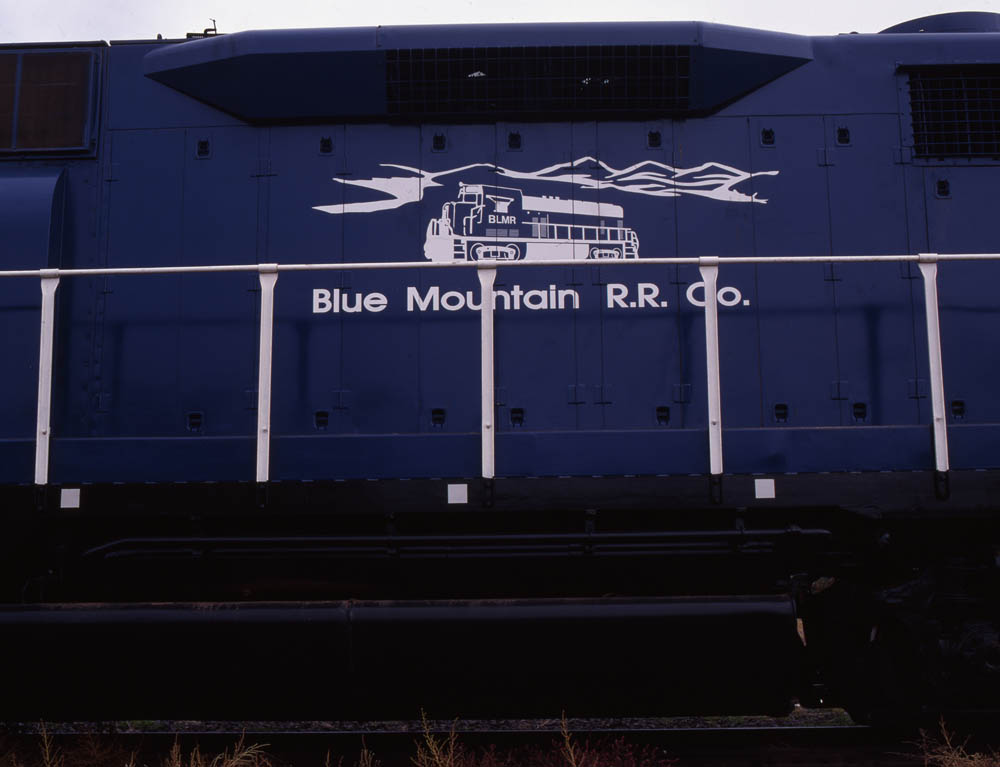
The Blue Mountain Railroad logo. John Henderson photo, Jeff Moore collection. |
|||||||||||||||||||||||||||||||||
|
|
|||||||||||||||||||||||||||||||||
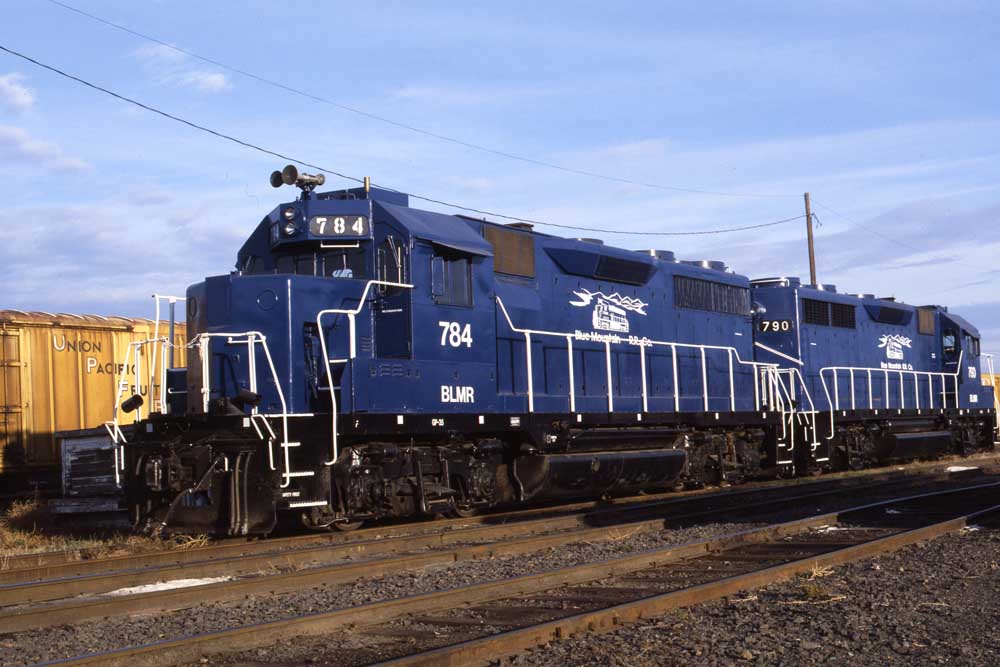
The Blue Mountain Railroad initially operated with four former Western Pacific GP35s purchased from Union Pacific
at startup. The two the railroad assigned to the Walla Walla operations are seen here in Walla Walla. John Henderson photo, Jeff Moore collection. |
|||||||||||||||||||||||||||||||||
|
|
|||||||||||||||||||||||||||||||||
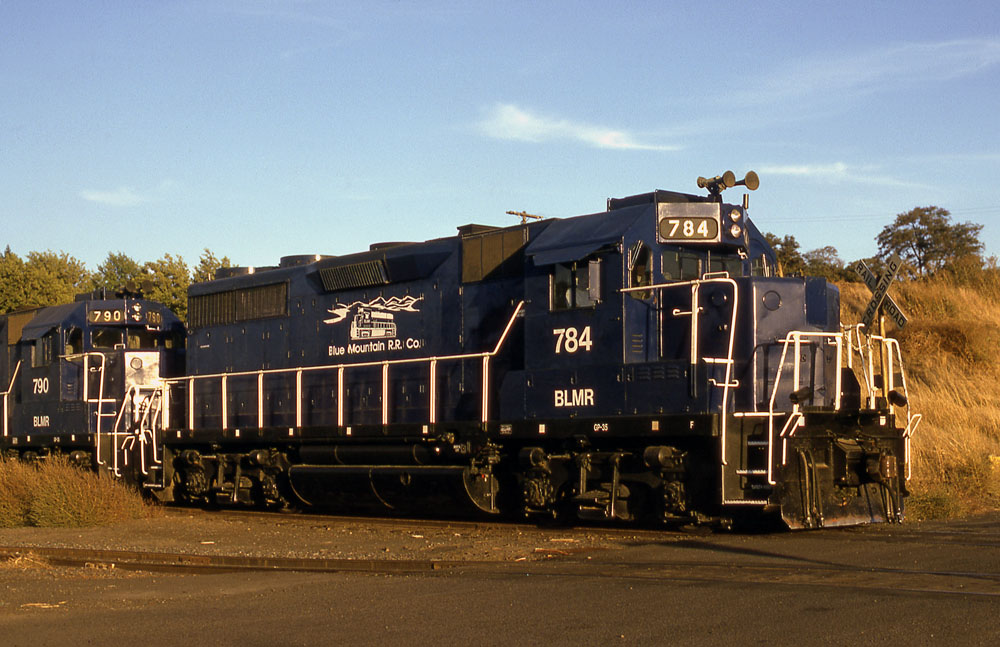
Blue Mountain Railroad's locomotives in Dayton, Washington, on 6 October 1994. Keith E. Ardinger photo. |
|||||||||||||||||||||||||||||||||
|
|
|||||||||||||||||||||||||||||||||
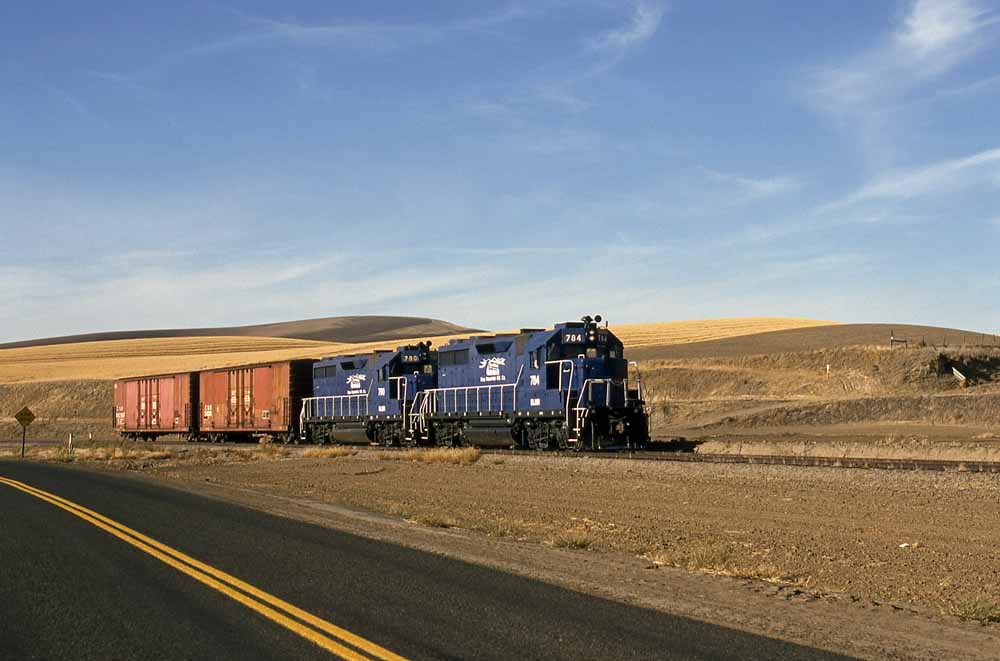
Blue Mountain Railroad #784 and #790 at Bolles, Washington, on 6 October 1994. Keith E. Ardinger photo. |
|||||||||||||||||||||||||||||||||
|
|
|||||||||||||||||||||||||||||||||
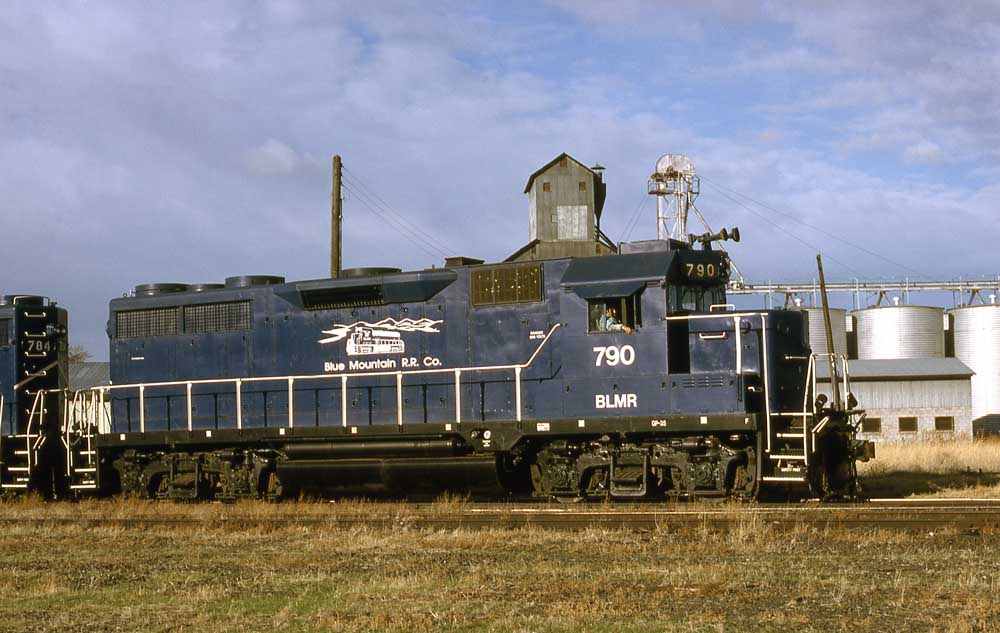
Blue Mountain Railroad #790 in Walla Walla in October 1994. Keith E. Ardinger photo. |
|||||||||||||||||||||||||||||||||
|
|
|||||||||||||||||||||||||||||||||
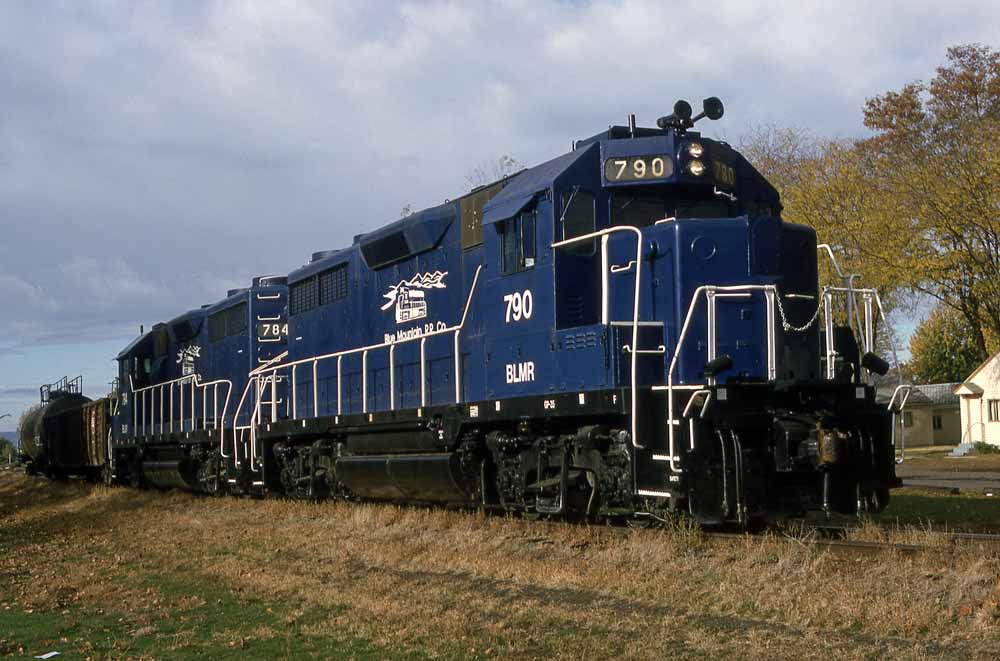
Blue Mountain Railroad #790 and #784 in Walla Walla on 28 October 1994. Keith E. Ardinger photo. |
|||||||||||||||||||||||||||||||||
|
|
|||||||||||||||||||||||||||||||||
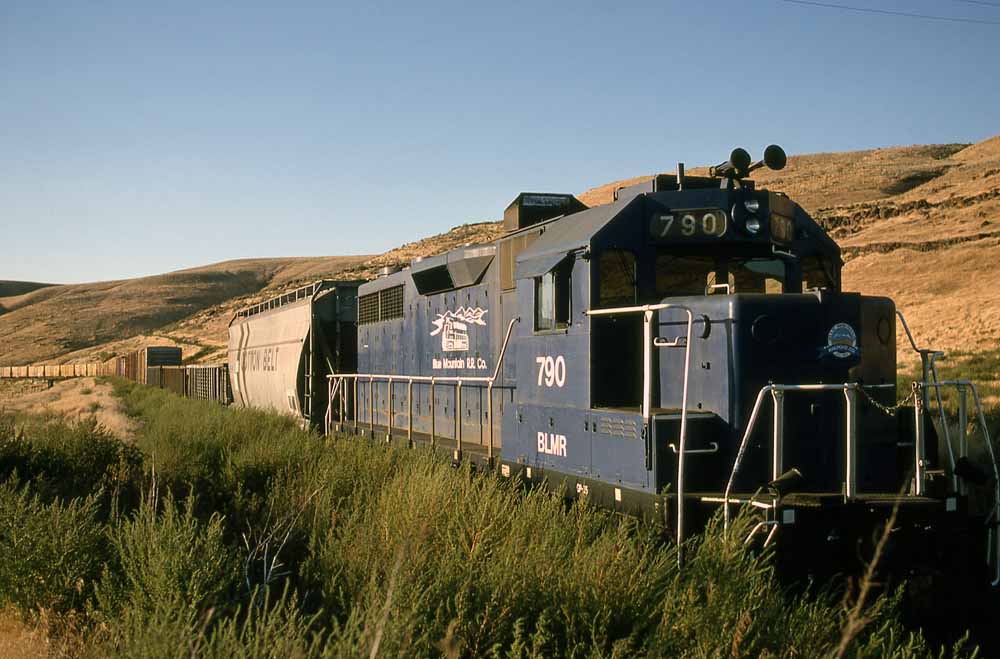
Blue Mountain Railroad #790 at Reese, Washington, in 1996. Keith E. Ardinger photo. |
|||||||||||||||||||||||||||||||||
|
|
|||||||||||||||||||||||||||||||||
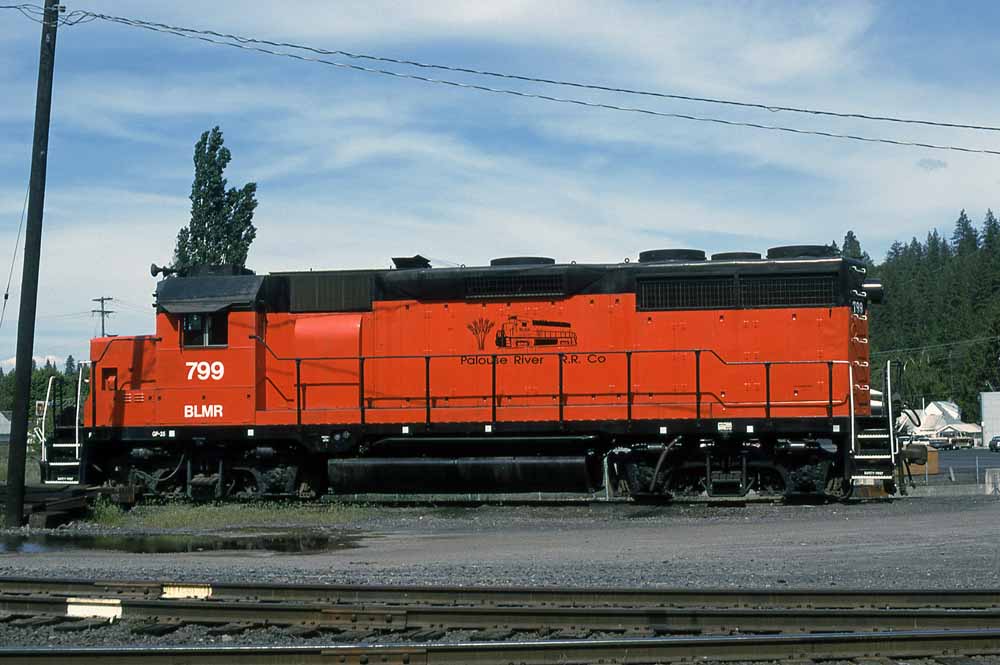
Blue Mountain Railroad #799 at Colfax, Washington, on 23 May 1995, wearing the then more traditional Watco black and orange colors on the railroad's northern operations. Keith E. Ardinger photo. |
|||||||||||||||||||||||||||||||||
|
|
|||||||||||||||||||||||||||||||||
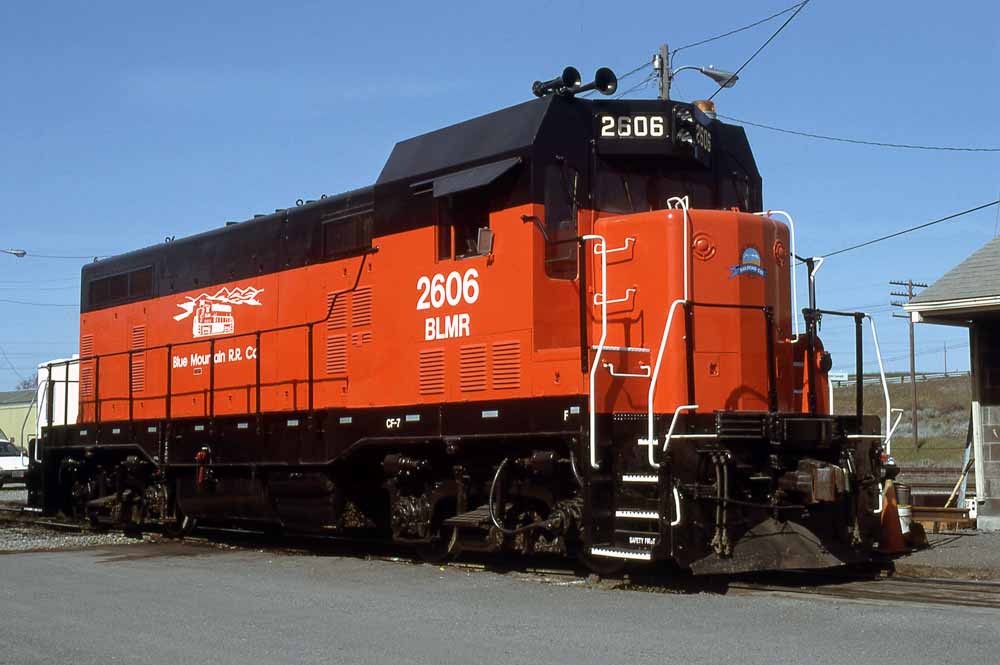
Blue Mountain Railroad CF-7 #2606 in Wallula on 20 April 1998. Keith E. Ardinger photo. |
|||||||||||||||||||||||||||||||||
|
|
|||||||||||||||||||||||||||||||||
Two events in 1996 affected the Blue Mountain Railroad operations. First, Union Pacific donated the 37 miles of track from Walla Walla north to
Dayton, both in Washington, to the Port of Columbia. Blue Mountain continued to operate the line.
Second, in September 1996 Watco purchased a second group of branchlines centered to the north of the Blue Mountain Railroad operations from Burlington Northern
successor Burlington Northern Santa Fe (BNSF). Watco set up the new Palouse River & Coulee City Railroad (PCC) to operate those lines. The PCC initially
assumed some of the adjacent Blue Mountain Railroad lines, and then in 2000 Watco fully merged the Blue Mountain Railroad into the PCC. Locomotives provided
by PCC gradually replaced the Blue Mountain power. |
|
|
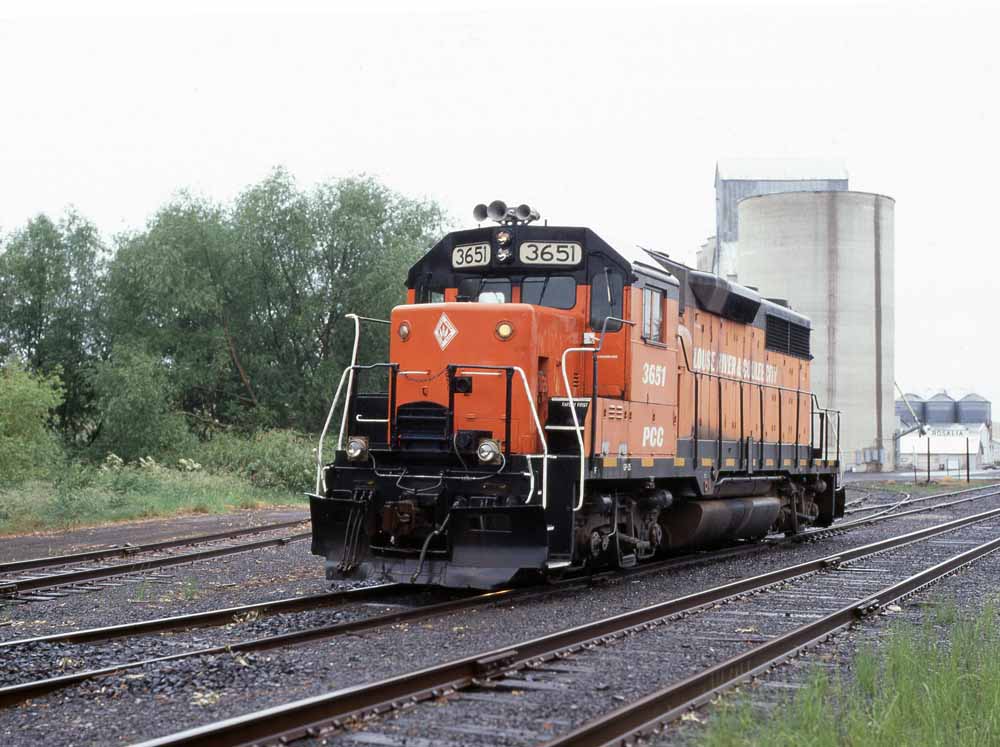
Palouse River & Coulee City #3651 is typical of the power Watco used in the area after the Blue Mountain Railroad merger. C.G. Heimerdinger photo, Jeff Moore collection.
|
|
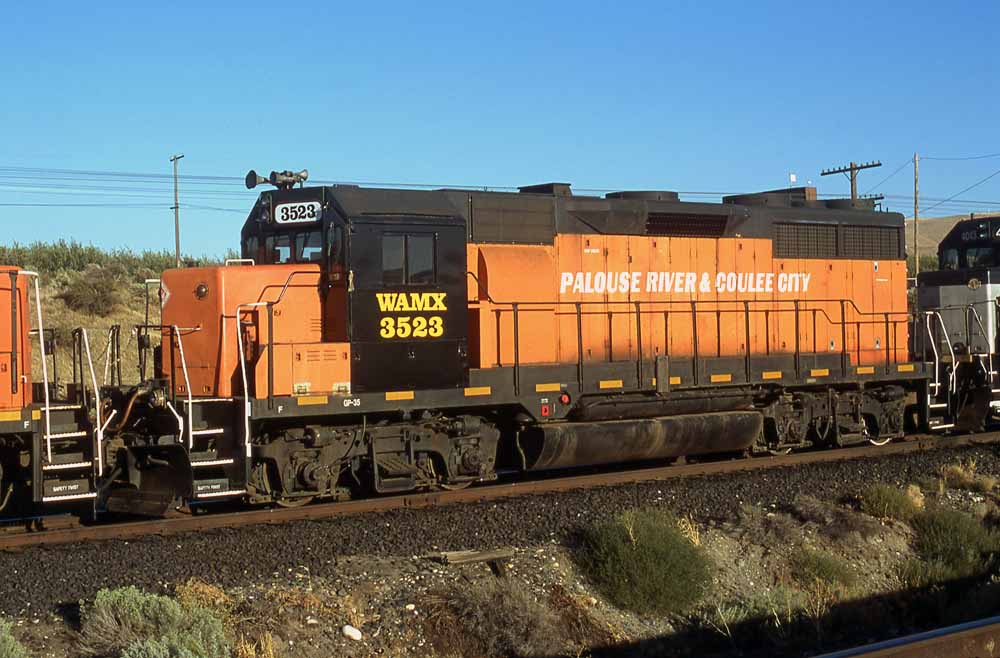
WAMX (Webb Assett Management) #3523 on the Palouse River & Coulee City's former Blue Mountain Railroad line at Wallula, Washington, on 2 September 2011. Keith E. Ardinger photo.
|
PCC's footprint in Oregon expanded in 2003 when Union Pacific leased to Watco the remaining 11.5 miles of the Condon Branch, by then known as the Condon Subdivision.
The branch had generated substantial grain and lumber traffic through the decades, but by the early 1990s the Gilliam County Landfill provided the only remaining
traffic. Gilliam County was one of several local governments in the region that saw commercial and economic development opportunity in mounting waste disposition
and management problems in the booming cities on the west coast, and they opened the 2,000 acre landfill to provide space for that trash. Trash from the cities
would be loaded into containers, which Union Pacific hauled in unit trains to the landfill. PCC taking over this operation did not change the public face of this
operation, as UP power continued powering trains up to the landfill. |
|
|
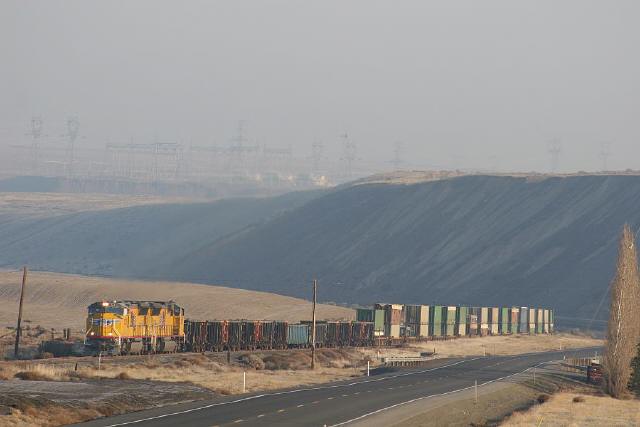
A garbage train on the Condon Subdivision. Robert W. Scott photo.
|
|

A leased SD40-2 lettered for Waste Management and used to switch the landfill is the only non-UP power on the Condon Subdivision today. Luke Noltensmeyer photo.
|
PCC operations of the lines out of Walla Walla remained mostly static into the early 2010s. Traffic on the line to Dayton trailed off, and in 2014 PCC
ceased all operations on that line due to deteriorating track and bridge conditions. The Port of Columbia started efforts in conjunction with several partners, including
shortline railroad operator Frontier Rail and potential shippers on the line, to finance and then effect repairs. Frontier set up the Columbia-Walla Walla Railway (CWW)
to replace PCC as operator on the line, and the CWW restored rail service into Dayton in early October 2017. | In early 2019 Watco advised it would not be renewing its leases on the Wallula-Walla Walla-Weston line. Frontier's Columbia-Walla Walla Railway immediately stepped forward to fill the void, and between March and May it signed lease agreements with both UP and BNSF for the lines radiating out of Walla Walla. The CWW replaced PCC as operator of the lines in May 2019. The transaction did not affect the Condon Subdivision, which continues to be handled by the PCC. By late 2019 Frontier restructured its corporate organization, placing the CWW under its Columbia Rail corporate umbrella along with other shortline and switching operations in the region. While the bulk of theCWW's traffic is generated in Washington, their trains continued rolling south into Oregon to serve the Smith Frozen Foods plant in Weston until February 2020, when flooding in the region washed out the line in several places and damaged a trestle. No railcars were at Weston at the time, which allowed CWW to suspend service south of a reload Smith established at Milton-Freewater. Meanwhile, PCC operations on the Condon Subdivision remains strong. Waste Management now operates the landfill as the Columbia Ridge landfill and Green Energy Plant. Union Pacific still provides all the power on that line, and in addition to inbound waste and outbound ash, scrap, and other commodoties from the landfill the line also handles a large number of inbound windmill blades bound for the numerous wind energy farms in the region.
|
|
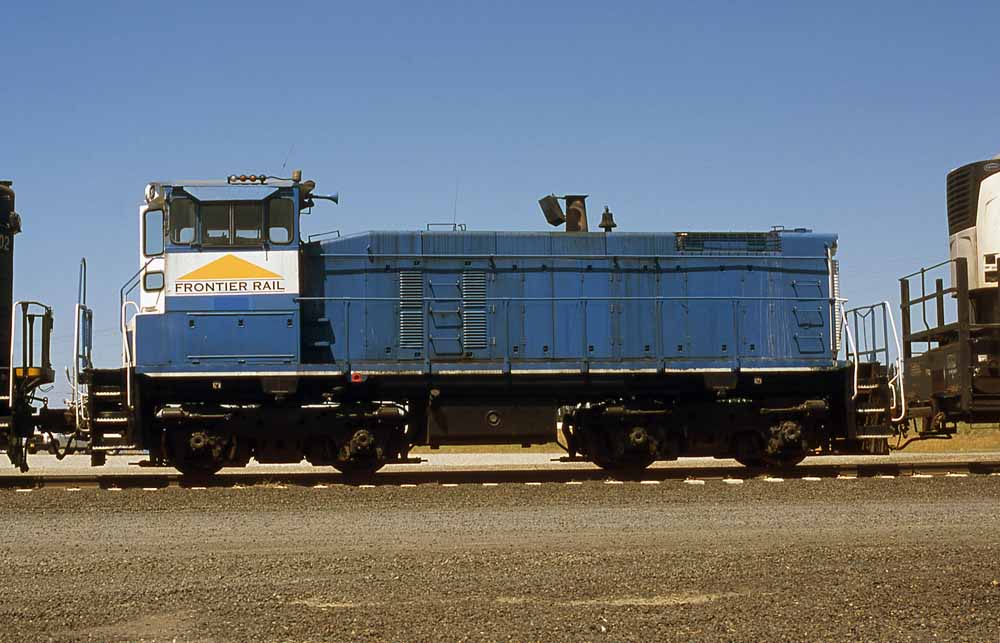
Frontier Rail #207 at Wallula on 9 May 2013. Keith E. Ardinger photo.
|
|
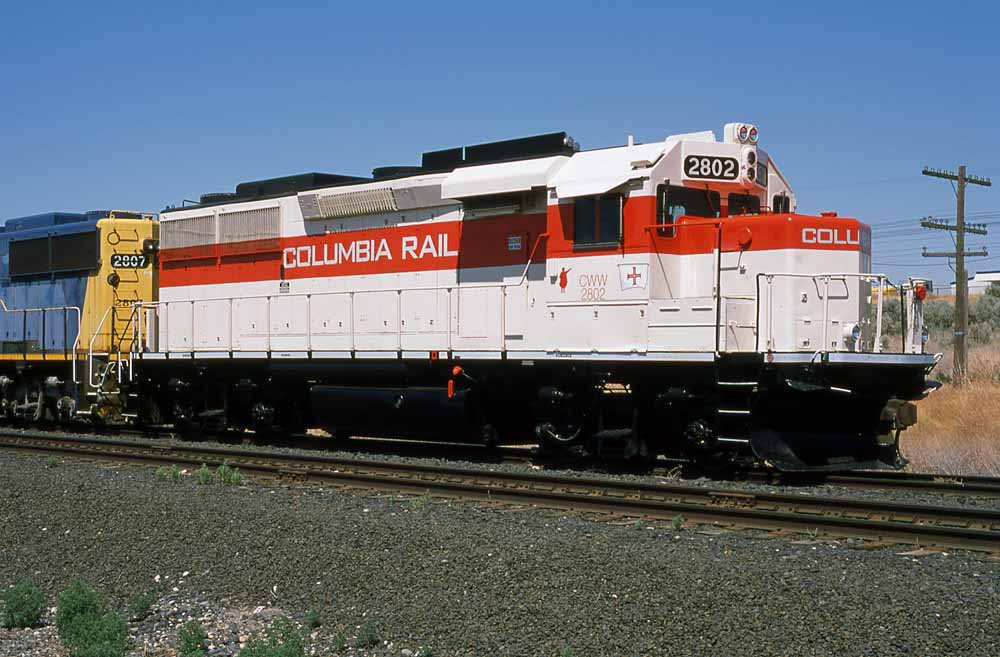
Columbia Rail #2802, a former Alaska Railroad GP49, wearing the company's attractive paint scheme at Wallula. Keith E. Ardinger photo.
|
Maps |
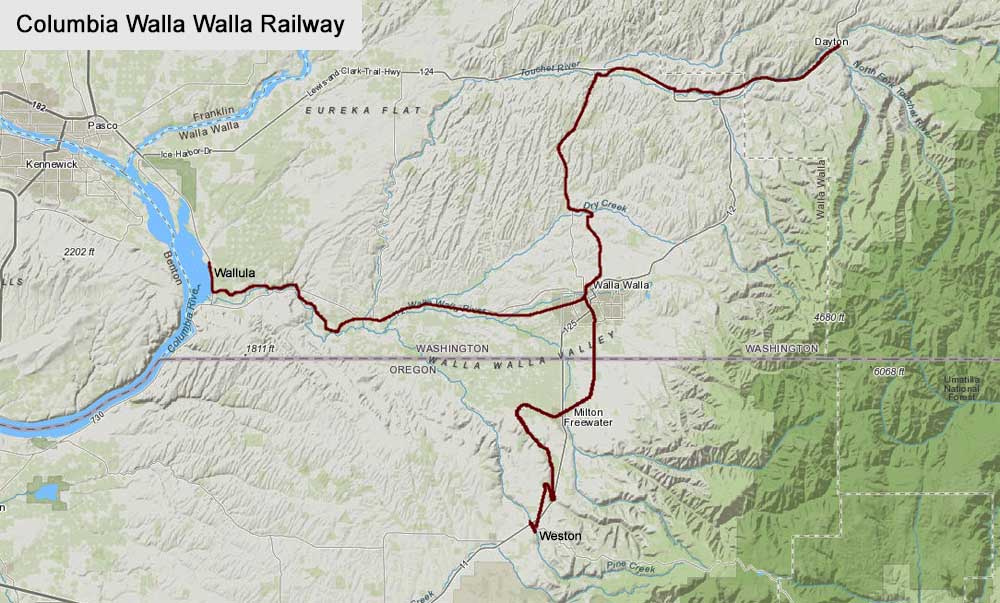 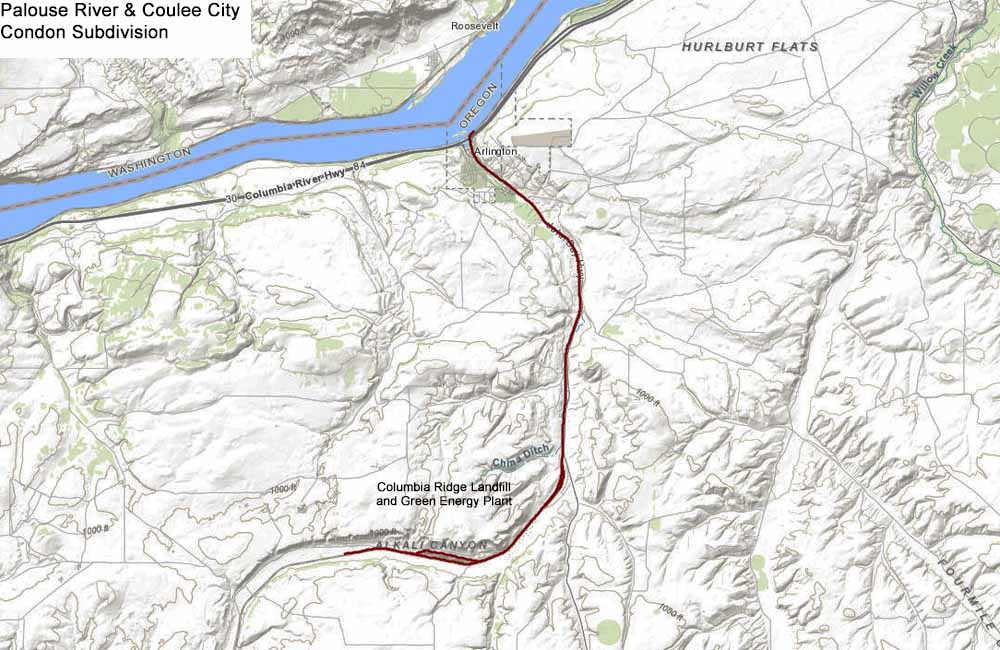
|
Photos |
John Henderson captures the following images of a Blue Mountain train rolling through country typical of northeastern Oregon and southeastern Washington. Jeff Moore collection.
|
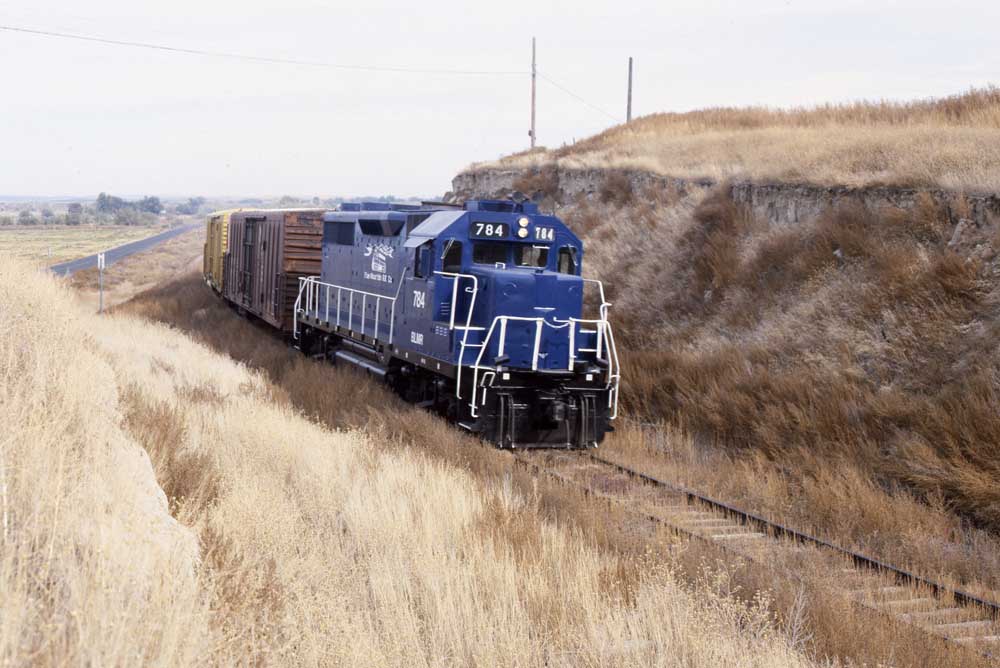
|
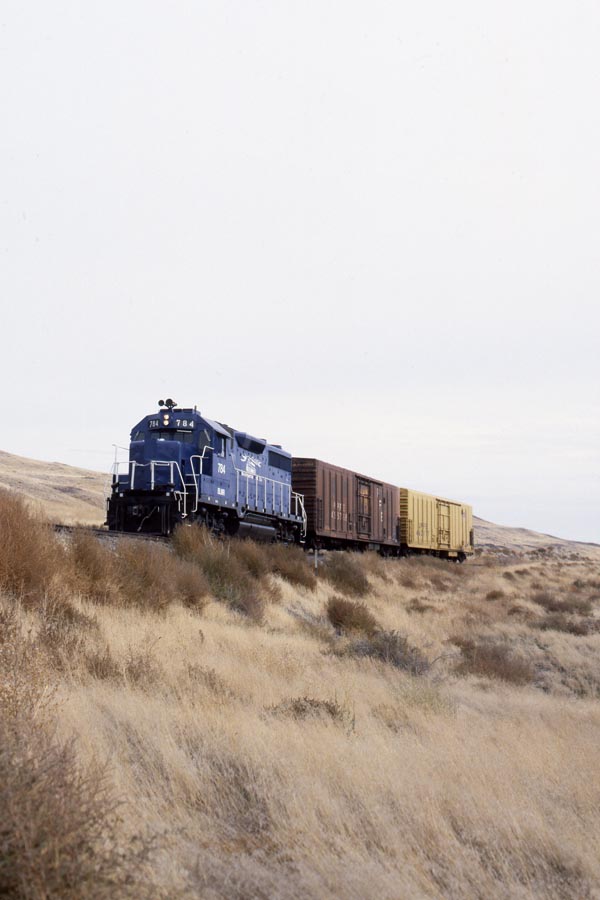
|
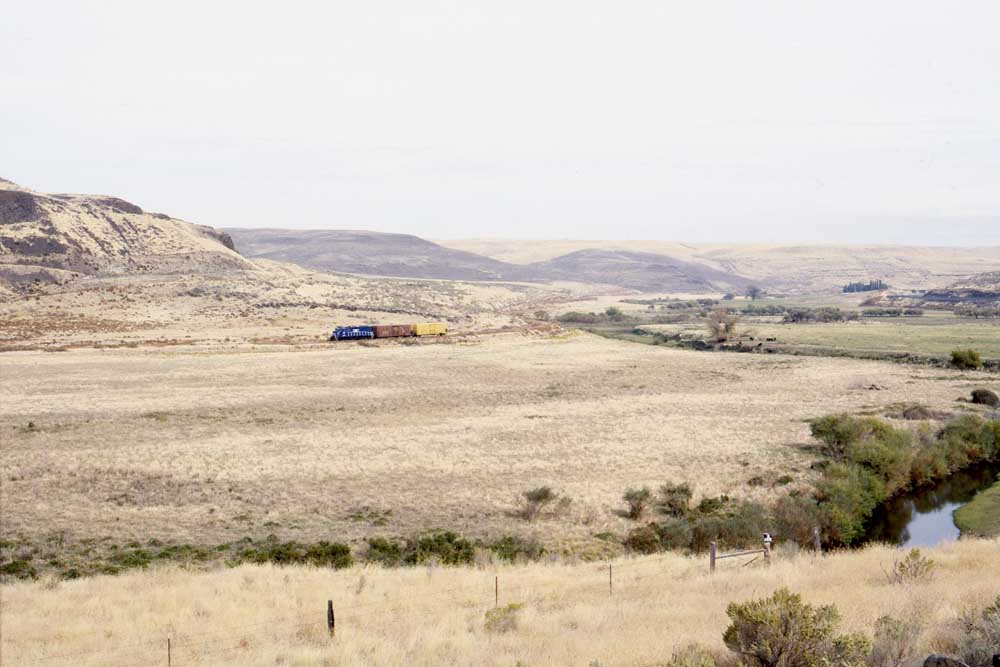
|
|
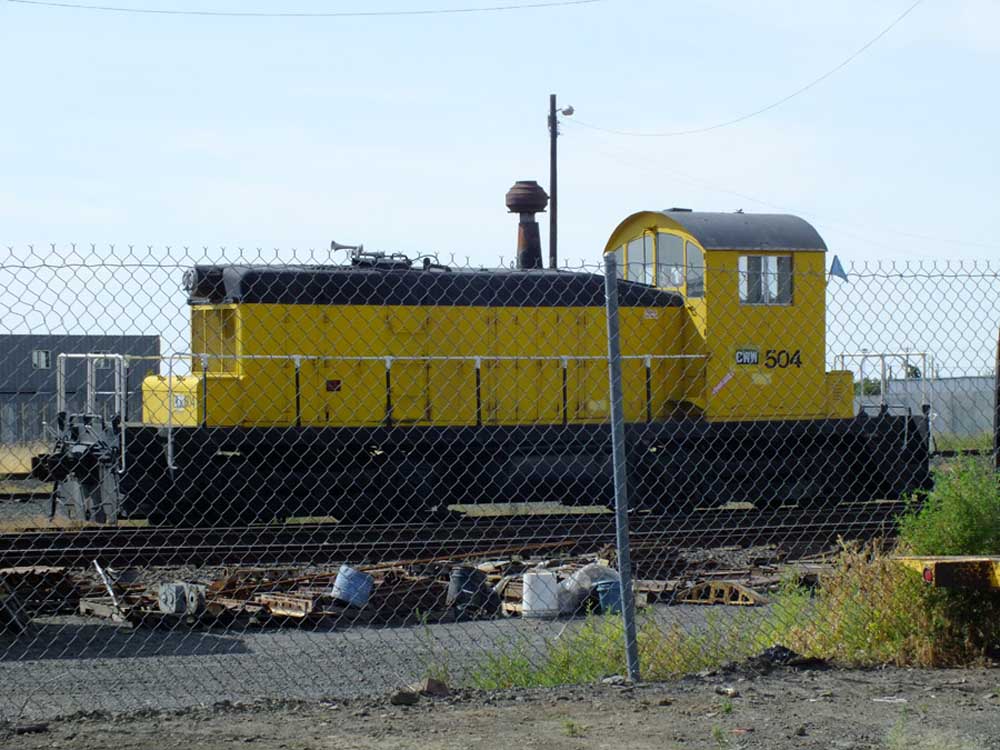
Frontier has assembled a substantial collection of locomotives that are moved about its various operations as required. As of August 2019 CWW power includes two ex-Alaska Railroad GP49s and several
switchers, including this leased EMD SW-1.
|
|
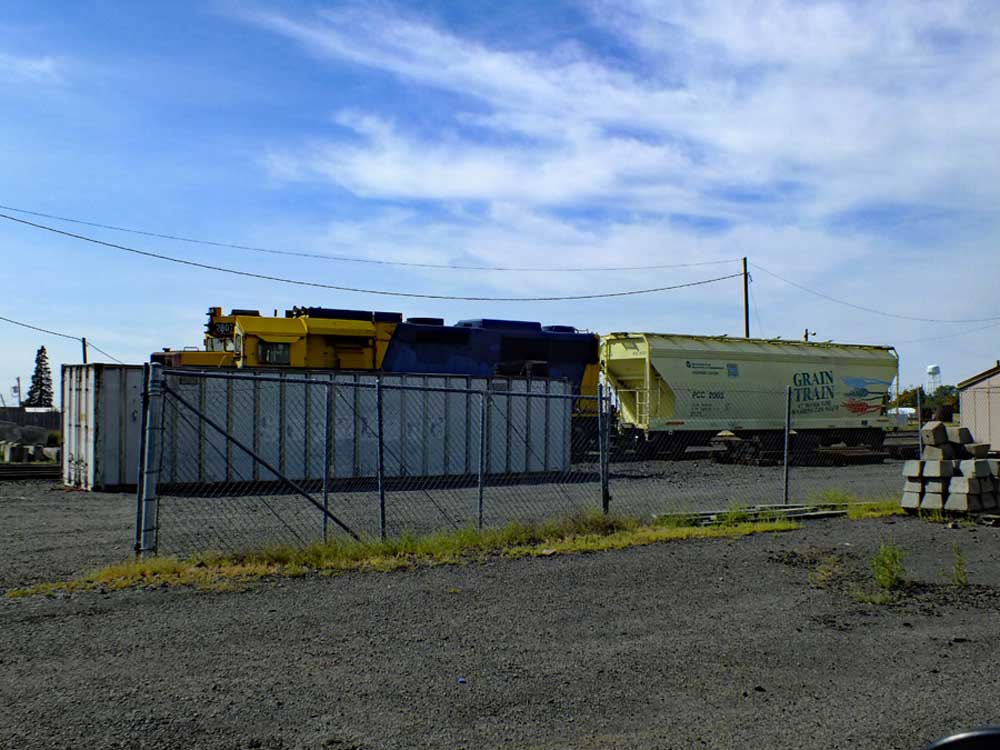
CWW's #2809 at the top of this page previously worked on the Lake Railway before coming to CWW. One of its sisters, the #2807, still wears full Alaska blue and yellow, though its partially obscured by a shipping container. Note the State of Washington grain car coupled to it.
|
|
References Books "American Shortline Railway Guide". Edward A. Lewis, Kalmbach Publishing, 1996. Periodicals "Washington's Palouse River & Coulee City" by Thomas Hillebrant, April 2000 Railfan & Railroad.
|
|
More on the Web Columbia Rail website Union Pacific Shortline Railroad Directory page for Columbia-Walla Walla Railway Western Shortline Rosters page for Columbia-Walla Walla Railway Western Shortline Rosters page for Palouse River & Coulee City Railroad Western Shortline Rosters page for Blue Mountain Railroad
|
|
|